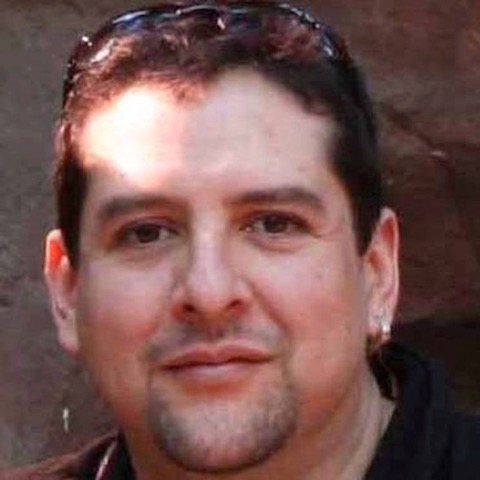The interviews, with Sendero/El Almacén co-principals Luis Bran and Liliam Cedeño, were conducted Jan. 15, 2016, at Luis’ home in Matanzas, Cuba. I spent two and a half weeks there studying Matanzas-style batá drumming with Idalberto (Puchito) Pérez, the musical director of the esteemed Grupo AfroCuba de Matanzas. The other purpose of my trip was to learn about the first independently operated record label and artist collective in Matanzas, Sendero/El Almacén. My research was supported by small grants from two universities where I teach: New York University and the State University of New York, Maritime College. I knew I would be studying batá, but wasn’t sure exactly how getting to know the label and collective would go. I had been in touch with Luis in advance of my arrival on the recommendation of an Edmonton-based drummer, Nathan Ouelette, and for this I am very grateful.
This was my second time in Matanzas. In 2013, also supported by grants from New York University and Maritime College, I studied various Afro-Cuban folkloric musics primarily with Luis (Luisito) Cancino Morales and Gilberto (El Indio) Morales Chiong. That first trip was illuminating, but I knew I’d only scratched the surface. I wanted to return with a more specific focus this time. It was fortuitous to meet Luis, as in addition to his insider status in Matanzas’ Afro-Cuban community as a conguero, spiritual practitioner and producer, he also speaks impeccable English. This proved to be a huge help, as I don’t speak much Spanish. We ended up recording this interview at almost the very end of my trip. It rained parts of every day, uncharacteristically, and the weather really slows life down there. Meetings get postponed or cancelled. Gear has to stay dry. People don’t travel because of hazardous road conditions. All that is to say, it was not clear that this interview was actually going to happen. Until, miraculously, it did.
My sincere thanks to Luis, Liliam, Alé, Fito, Indira, Pablo, Puchito, and the entire Sendero/El Almacén extended family for their warmth and willingness to share their city’s rich culture.
Harris Eisenstadt: Thank you for speaking with me. Please tell me about the names of the collective and the label. Maybe you could translate the words and get to the origin story of the collective and the label.
Luis Bran: We have an artist collective established here in the city of Matanzas. The name of the collective is El Almacén, or the warehouse. By this we mean a warehouse of ideas, where we all can coexist regardless of our discipline, whether you’re a painter or sculptor or musician. A place where we can congregate to come up with meaningful ways of collaboration to expand our arts to the world. More importantly, to have a voice, where we can actually launch our productions into the Internet or social media, for others to see what we’re actually doing in this city. El Almacén also has a recording label. Our label is called Sendero. Sendero means pathways and we came up with the name because it is a pathway where upcoming artists can branch into a bigger place for the arts.
It all started in 2007 during Cuba’s largest music festival, Cubadisco, in the city of Havana. During the conference, I was shocked to discover that in the 320 years of our city [Matanzas] there has never been a recording studio or a label—a city that was once called the Athens of Cuba, where a lot of interesting artistic and literary manifestations were born—didn’t actually have a recording label or an editorial label. In other words, we were not cataloging all of these treasures. We started knocking on doors to see who would respond. At the time we discovered there was no license, no permits like the one we were dreaming of, and over the course of the next six years we knocked on every door possible, explaining what we wanted to do.
In the process I met a great visual artist, Liliam Cedeño, who was also fighting on her own to bring visual artists into the mainstream. Through our conversation we decided to help each other. We were offered a dilapidated and almost scary looking warehouse that had fallen to abandon. We organized local artists and we rescued the place—anything from rewiring to bringing a new roof and floor, and we established Matanzas' first artist collective. Still, we had no license, no means to legalize our situation. The second thing that struck us was that we were creating, this artist collective and recording studio, was designed for people who had no means to pay for these services. It was almost like an epiphany. We decided to become almost like a charity, a place where artists could gather and provide their services for free. The results from the artistic productions will be sent to the appropriate channels outside of Cuba and all the monetary results will be divided evenly within the collective.
There are a number of clips that we’ll include on the podcast. Could you describe the significance of the piece that we’ll be hearing, the general idea of each group. First up, Reyés del Tambor.









